Portrait Mode is a photo essay series about Singapore and all the people and things in it, seen through the lenses of our young photographers at Mothership.
This week, we take a look at how offerings and kim zua are made during the Hungry Ghost Festival, and speak to some residents about why they do it.
The month of August is always a particularly spooky one, thanks to the annual Hungry Ghost Festival — where it is believed the gates of Hell are opened and the spirits dwelling within emerge to wander the earth for food and drink.
If they are ignored, custom dictates that they may get up to mischief, and so people put out food and drink offerings, and burn money and other items for them.
The traditional Buddhist and Taoist festival is held in the seventh month of the Chinese calendar — this year, that is between August 1 and 29.
Its origin, though, is a pretty interesting story:
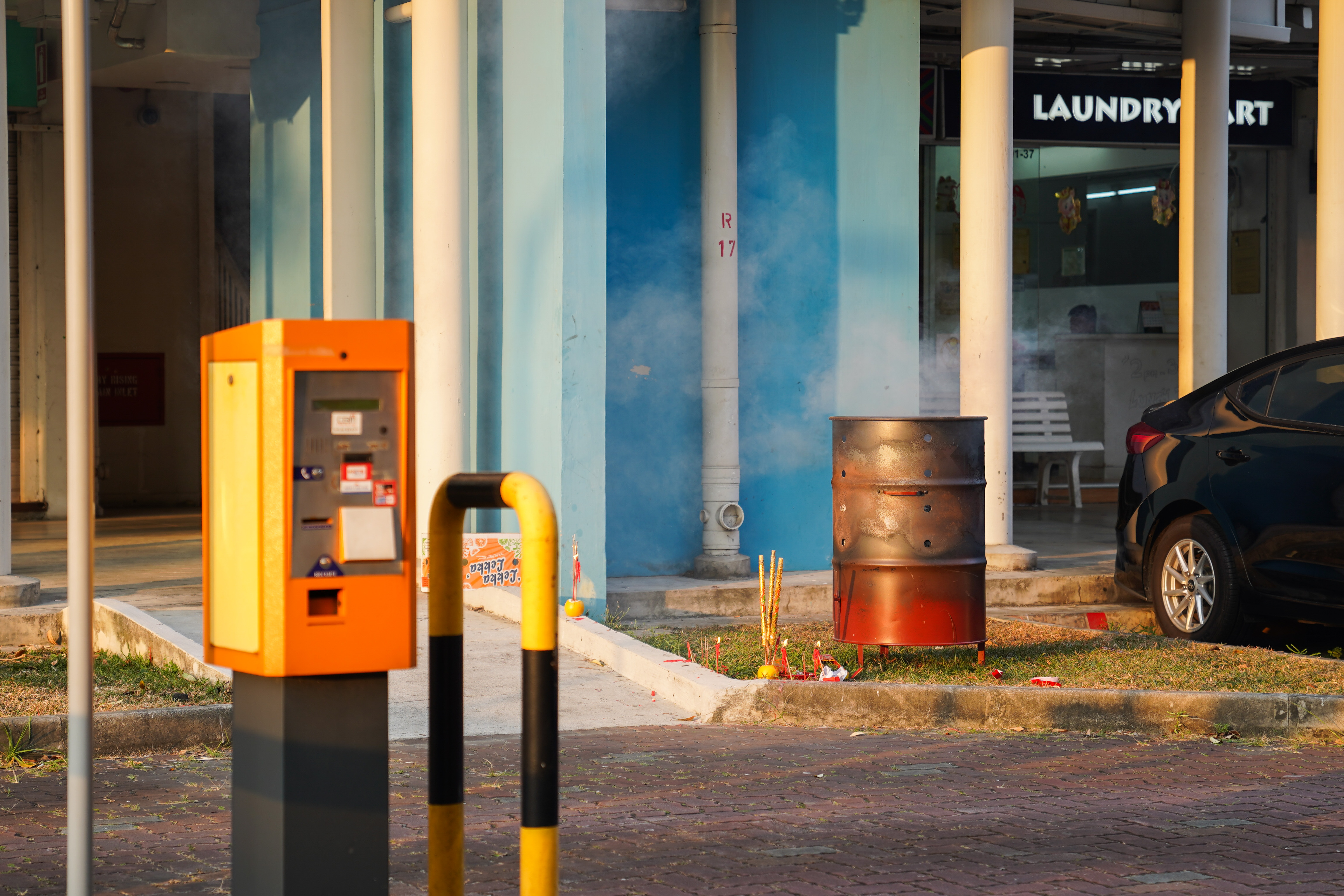 A burning bin and offerings. Photo by Rachel Ng.
A burning bin and offerings. Photo by Rachel Ng.
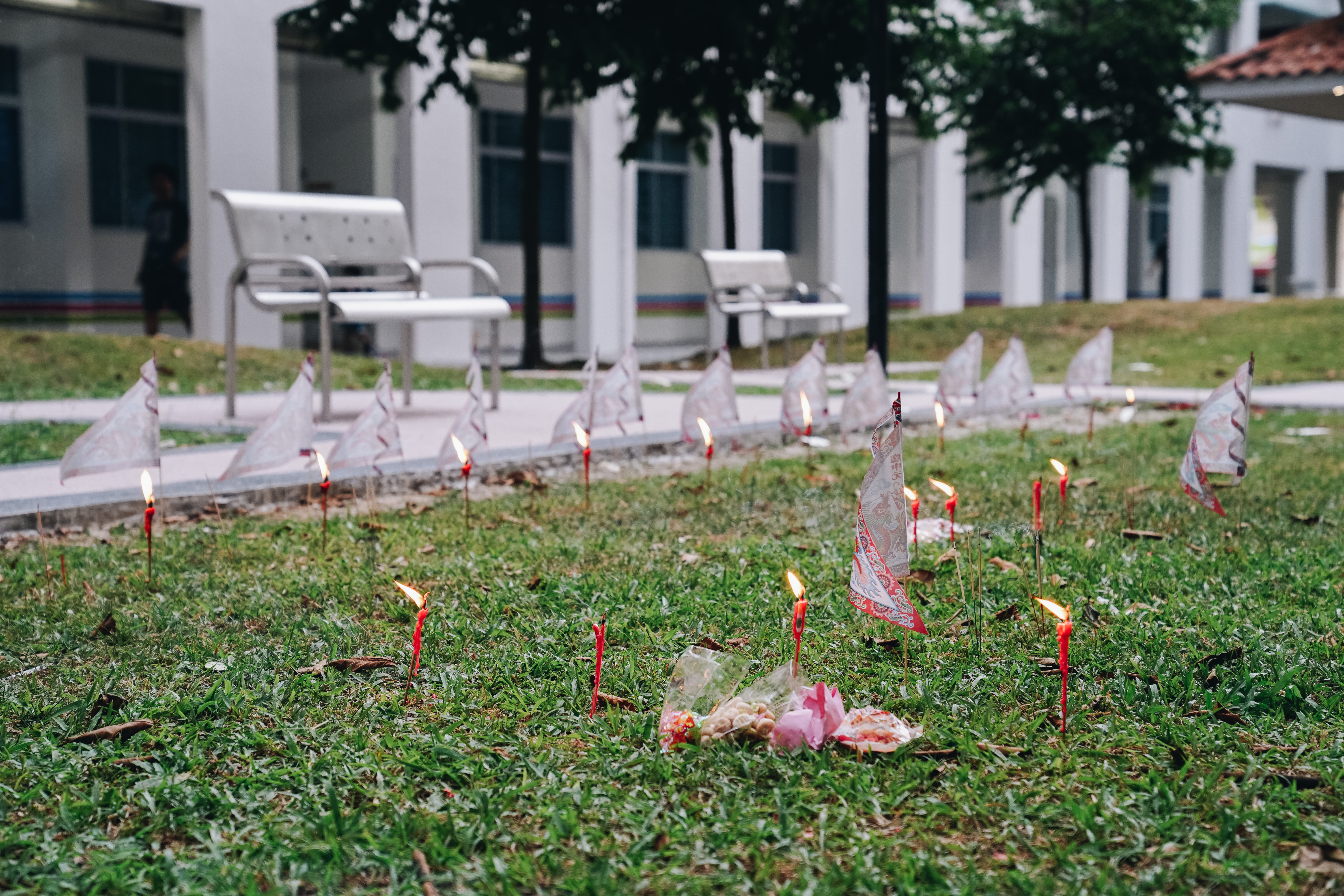 Offerings at a HDB estate. Photo by Rachel Ng.
Offerings at a HDB estate. Photo by Rachel Ng.
The festival's high point is on the 15th of the month (incidentally, August 15 this year), when it is widely believed that the gates of both heaven and hell are opened, and the good and bad ghosts gather.
Which is why you might have noticed an increased number of people burning offerings on the 15th.
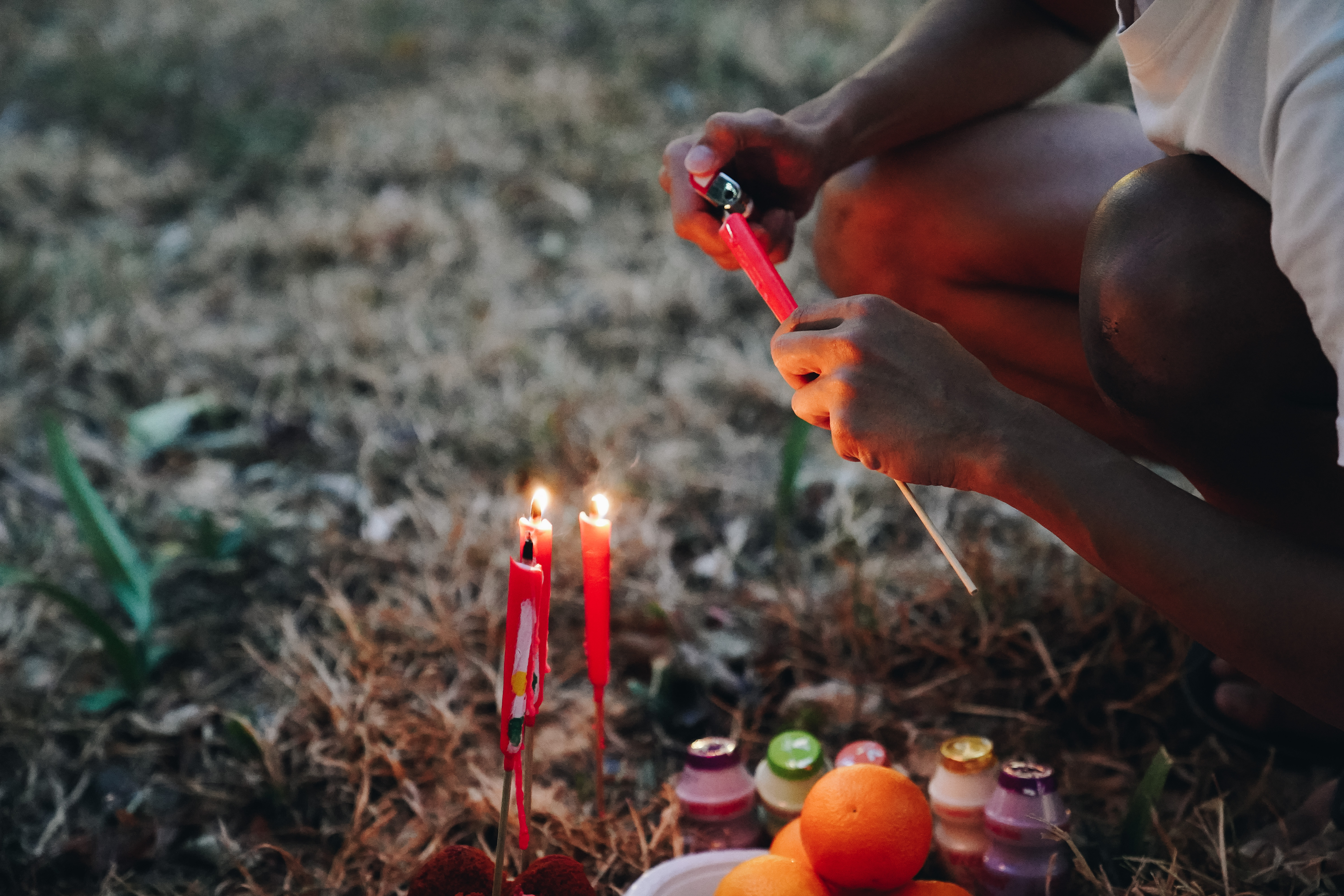 Lighting up candles to prepare for praying. Photo by Rachel Ng.
Lighting up candles to prepare for praying. Photo by Rachel Ng.
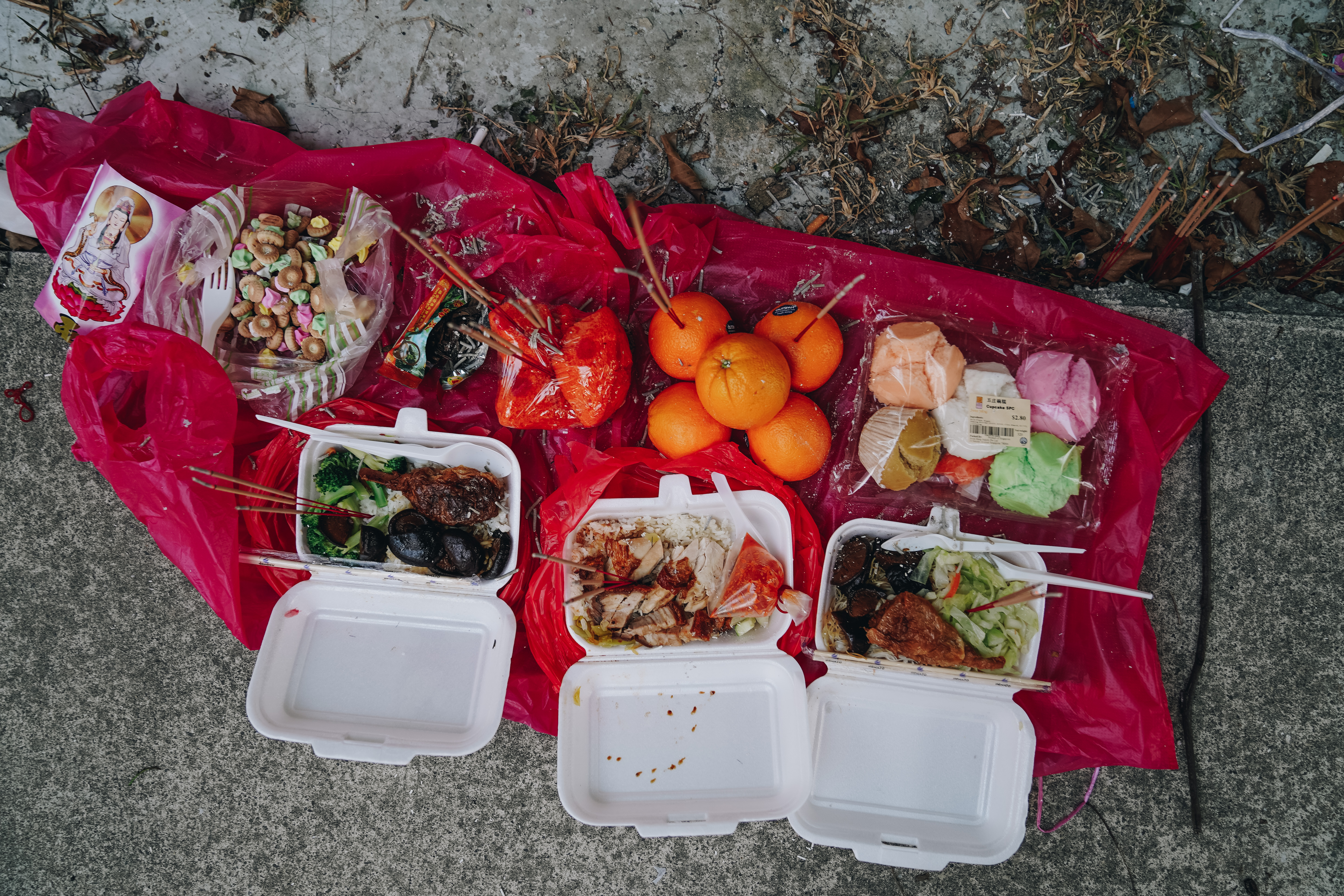 Mr Tan's offerings. Photo by Rachel Ng.
Mr Tan's offerings. Photo by Rachel Ng.
“Basically it’s (like an) offering to all the souls, wandering souls, without families," says 63-year-old Mr Tan, when I asked him why people offer food and hell notes.
How does he know whether the ~spiritual beings~ have received the offerings?
"We call them lor..." he quips cheekily.
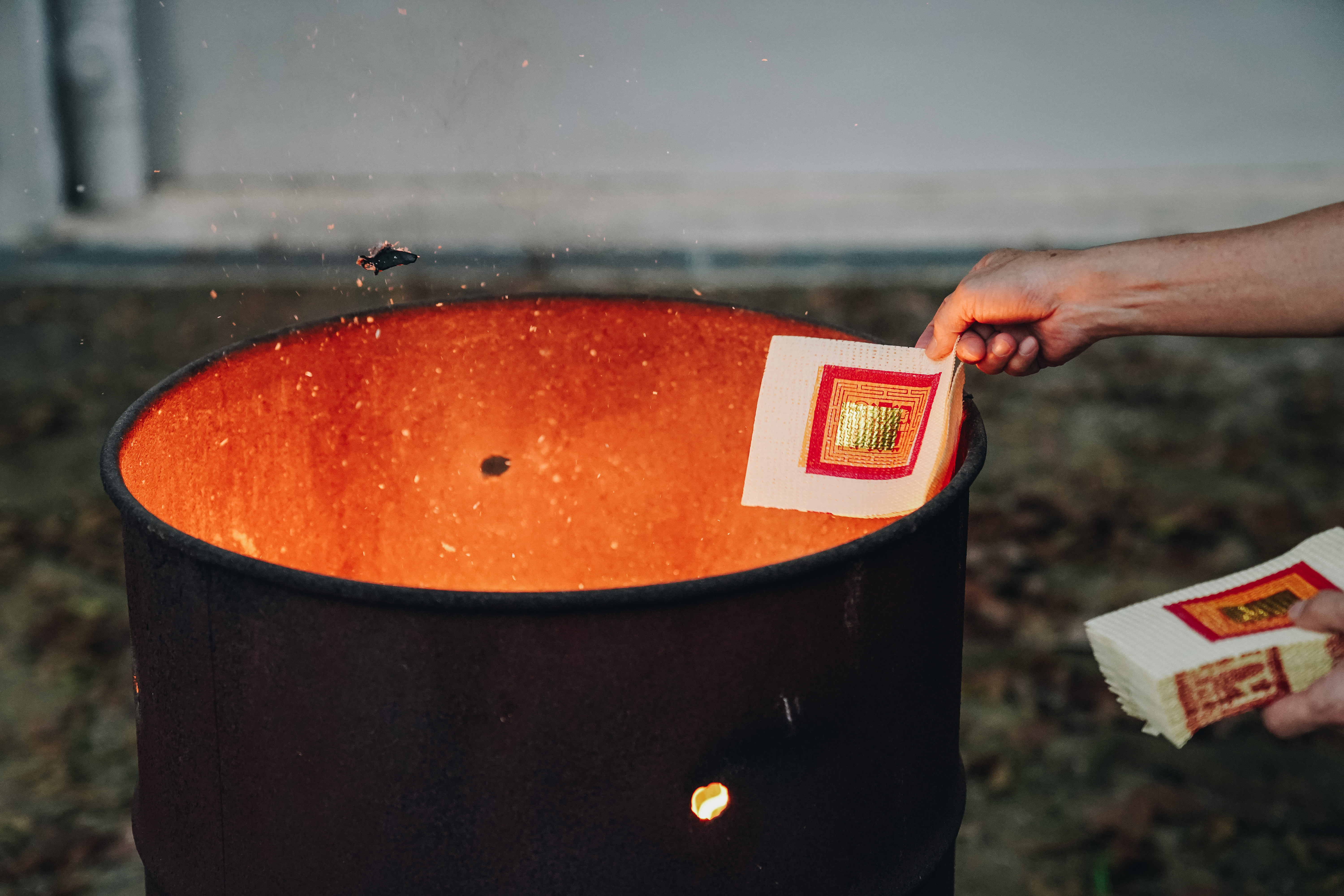 Mr Tan throwing joss paper into a burning bin. Photo by Rachel Ng.
Mr Tan throwing joss paper into a burning bin. Photo by Rachel Ng.
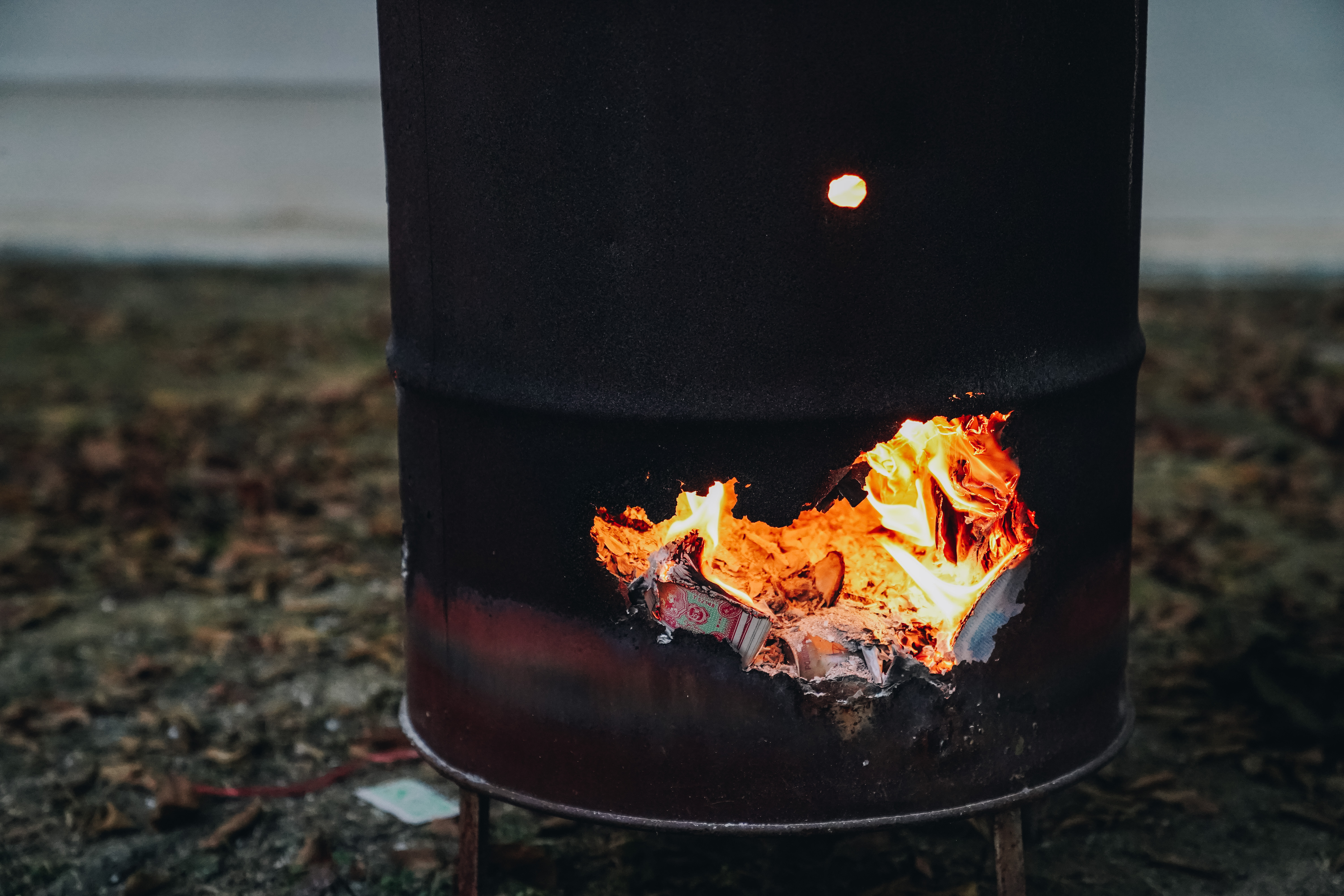 Joss paper being burned. Photo by Rachel Ng.
Joss paper being burned. Photo by Rachel Ng.
For younger Singaporeans, putting out offerings and burning candles, incense sticks and kim zua become more of a tradition and practice after years of doing so with their families.
Mr Wong's parents have been celebrating Hungry Ghost Festival since he was younger. Now that the 36-year-old is married and has a place of his own, he continues the tradition with his own family.
"Last time before I had my own house, I didn't know that you need to burn (the offerings) on the 15th. I only thought you need to do it on the 1st and the last day.
And then, my dad told me - eh, 15th also need. So I started doing it. I'm just like, okay, what my parents say, then that's what I must do."
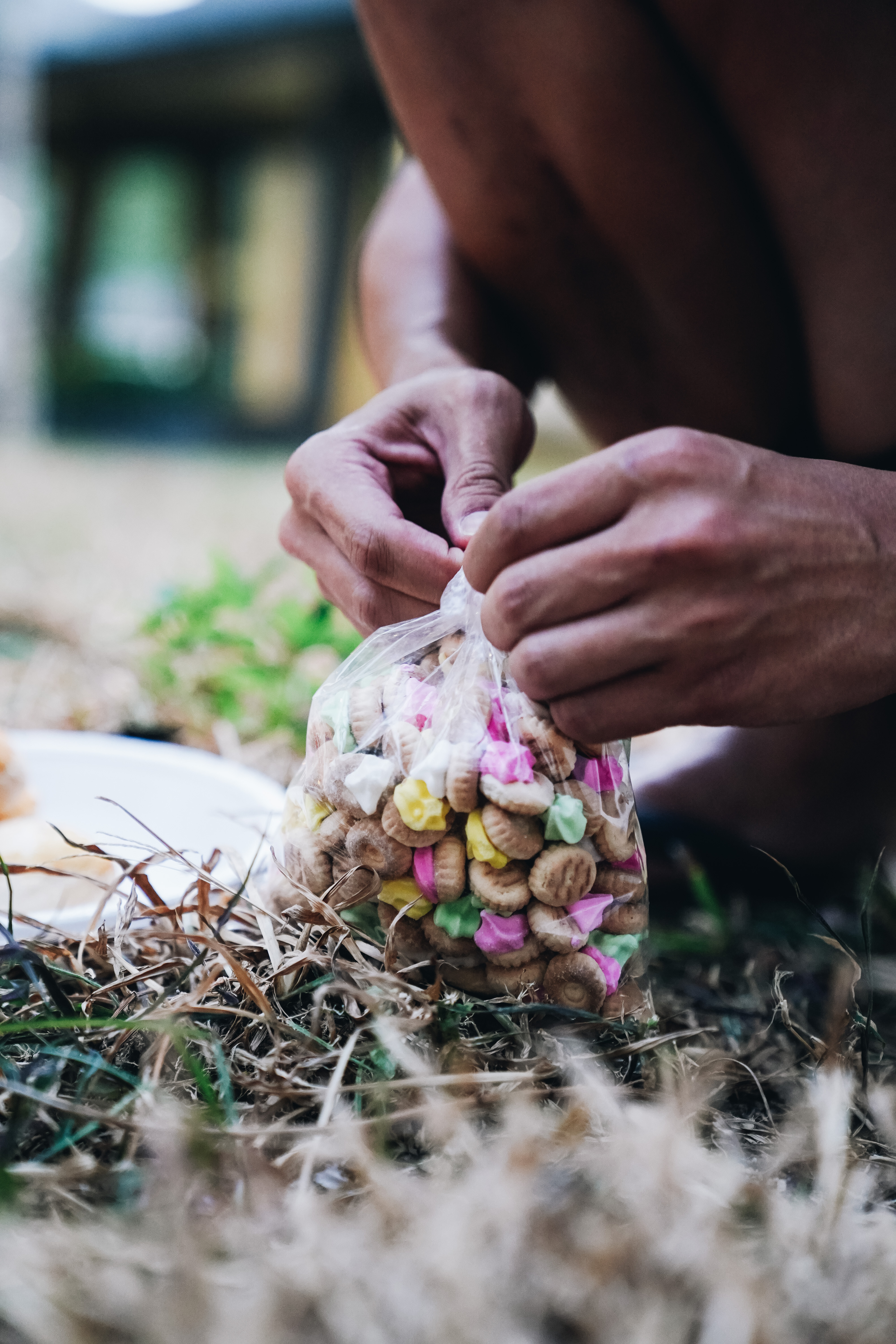 Mr Wong preparing iced gem biscuits as offerings. Photo by Rachel Ng.
Mr Wong preparing iced gem biscuits as offerings. Photo by Rachel Ng.
But is there some sort of symbolism for the items being offered? Can someone offer bubble tea or a nicely cooked steak as an offering for the hungry ghosts?
"So there are hungry ghosts — young and old. They always say that you must take care of the younger ones. Thus the Yakult.
Hungry Ghost Festival is more to make sure the place you're staying is blessed, and to make peace (with the spirits).
As long as there is peace in our house, we are content. As long as we show our respects, then ok lor."
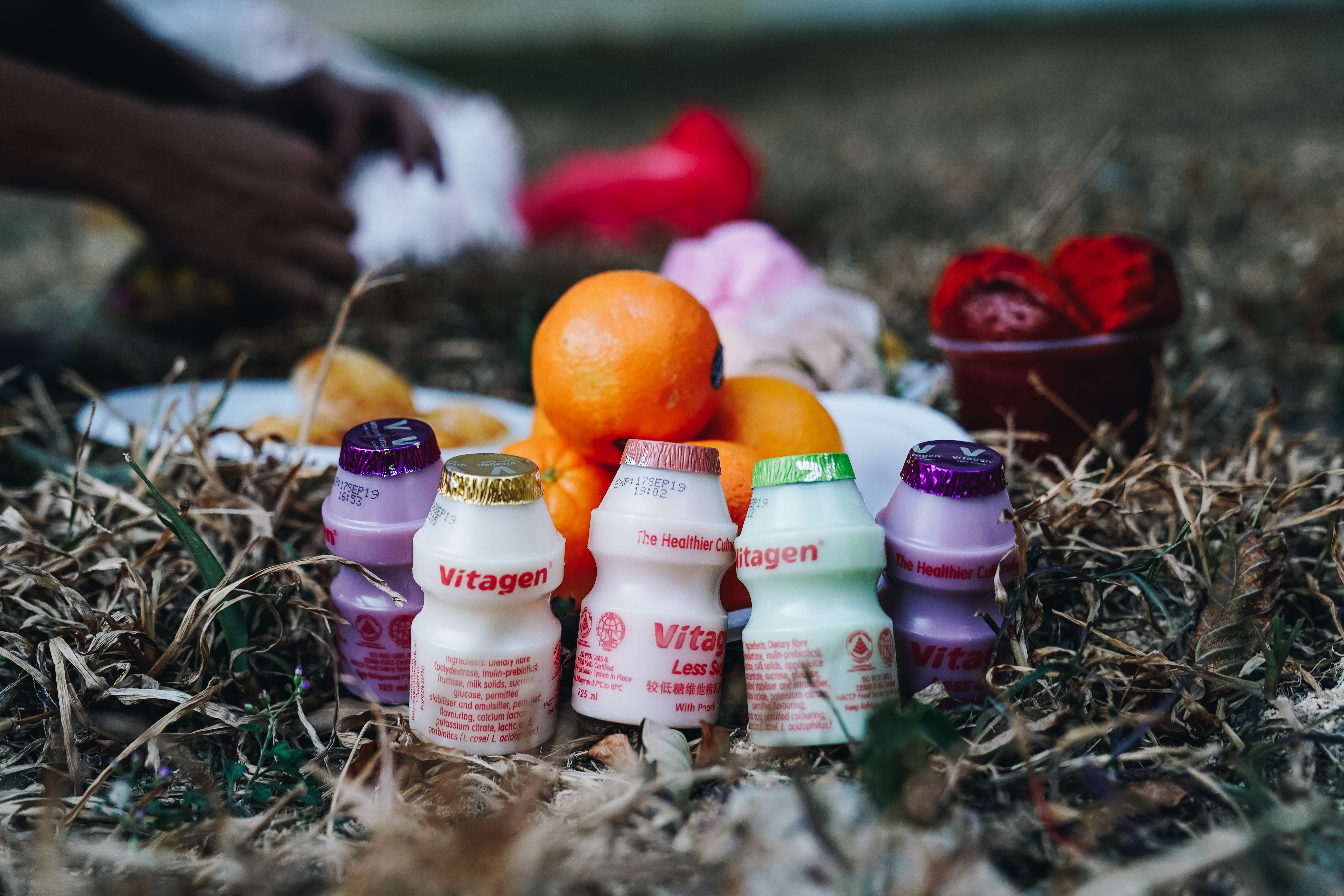 Mr Wong's Yakult as offerings. Photo by Rachel Ng.
Mr Wong's Yakult as offerings. Photo by Rachel Ng.
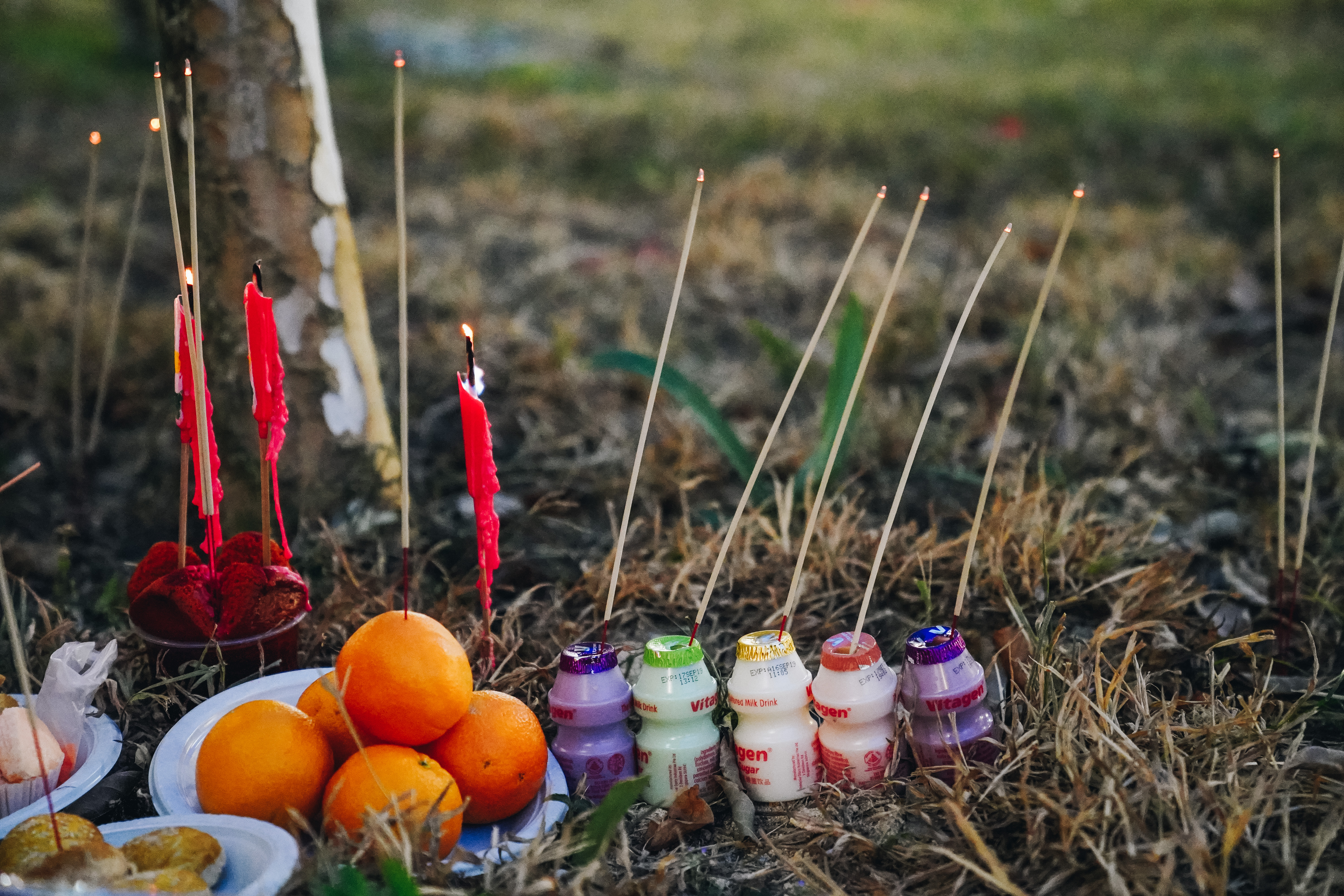 Joss sticks stuck into the bottles of Yakult. Photo by Rachel Ng.
Joss sticks stuck into the bottles of Yakult. Photo by Rachel Ng.
In recent years, the kim zua industry has also kept up with the times — with technology.
For Miss Chia, who is in her 30s, she does it because it's her mom's practice.
“The standard (to have while offering) is the incense paper lah. And then, this one is the rice and the other cakes are optional. We spoke to the person who sold us the incense paper, and he was saying that if you want, you can top up for these two. So we just bought it.”
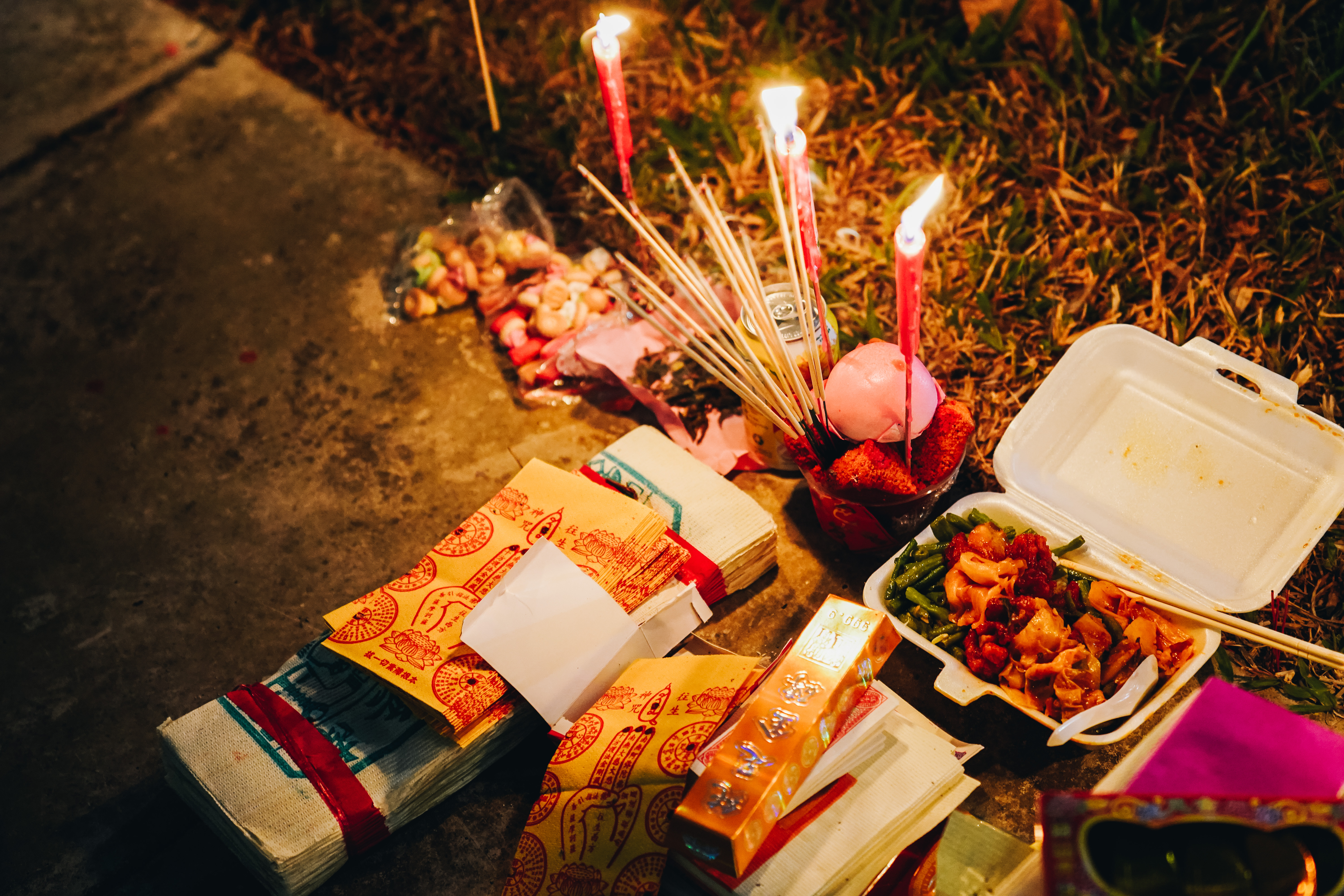 Chia's offerings, which she bought in a package. The packet of food and the cake is optional. Photo by Rachel Ng.
Chia's offerings, which she bought in a package. The packet of food and the cake is optional. Photo by Rachel Ng.
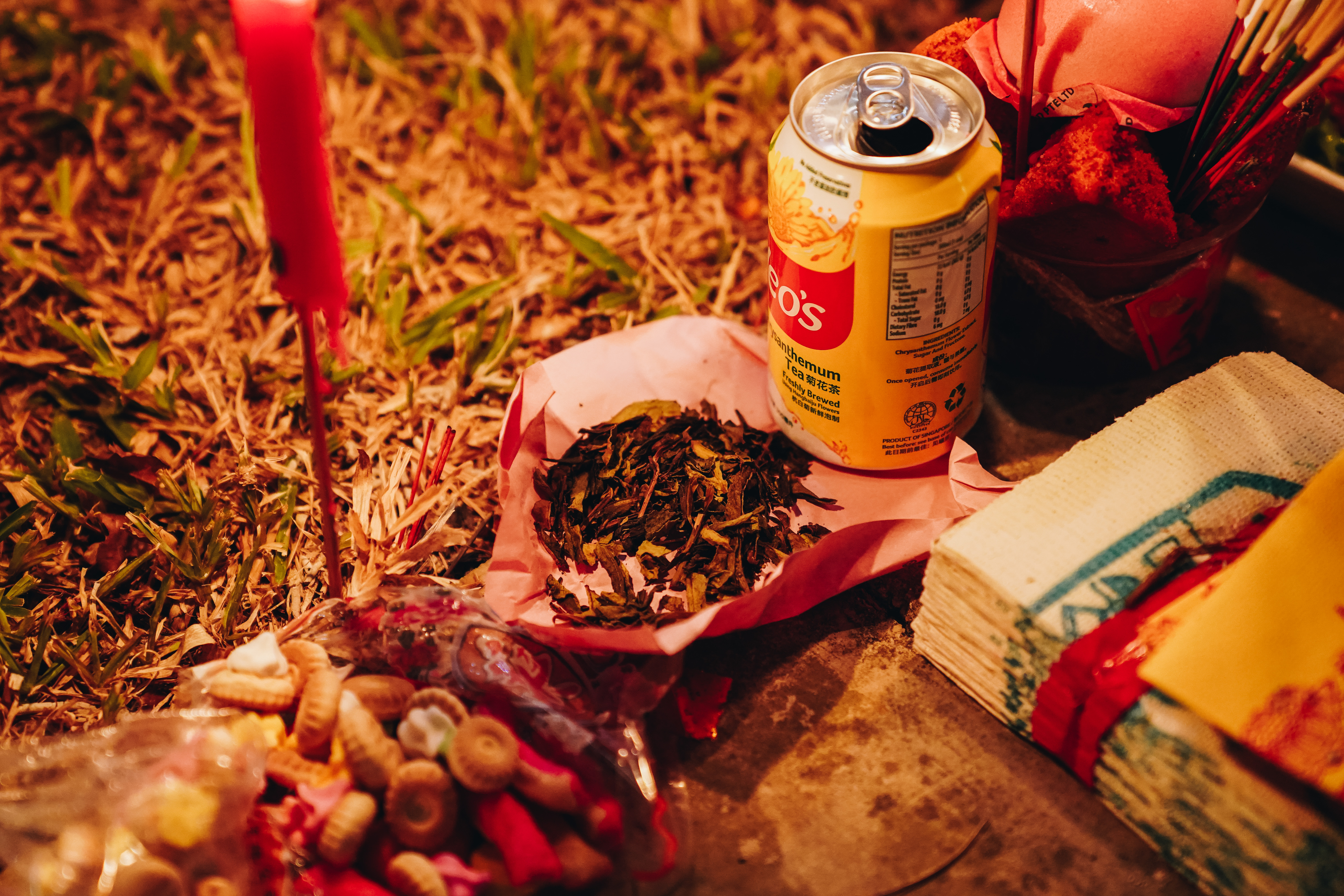 Tea leaves. Photo by Rachel Ng.
Tea leaves. Photo by Rachel Ng.
It's uncertain if the practice of burning offerings will continue to be a tradition in the future, although Wong and Chia both say they have no intention of stopping.
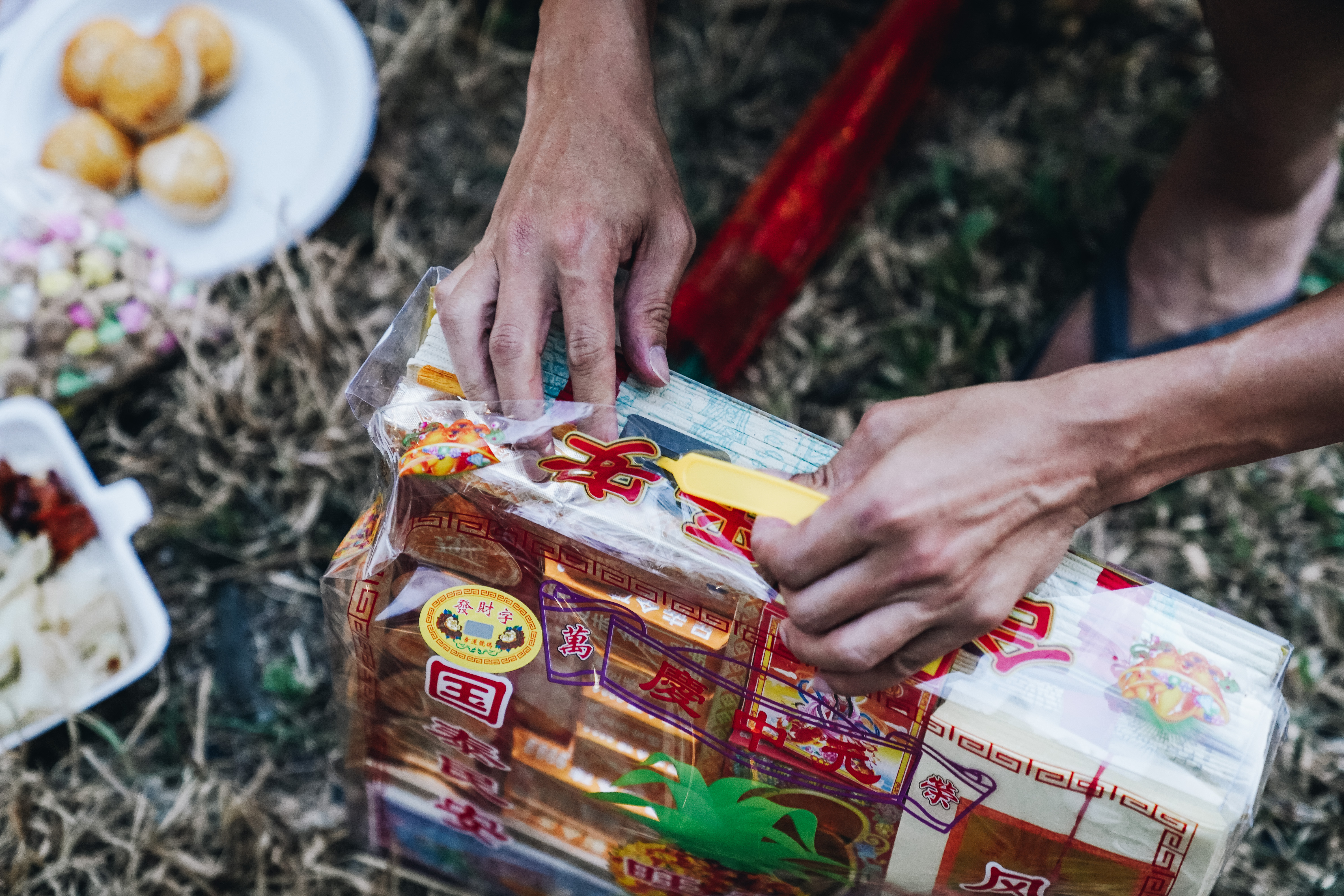 Wong opens a joss paper package. Photo by Rachel Ng.
Wong opens a joss paper package. Photo by Rachel Ng.
"I will continue to keep burning until I am 50 or what ah. Unless the government outlaws it or something. It will still be around until maybe my kids' time, then they may not want to do it already," says Wong.
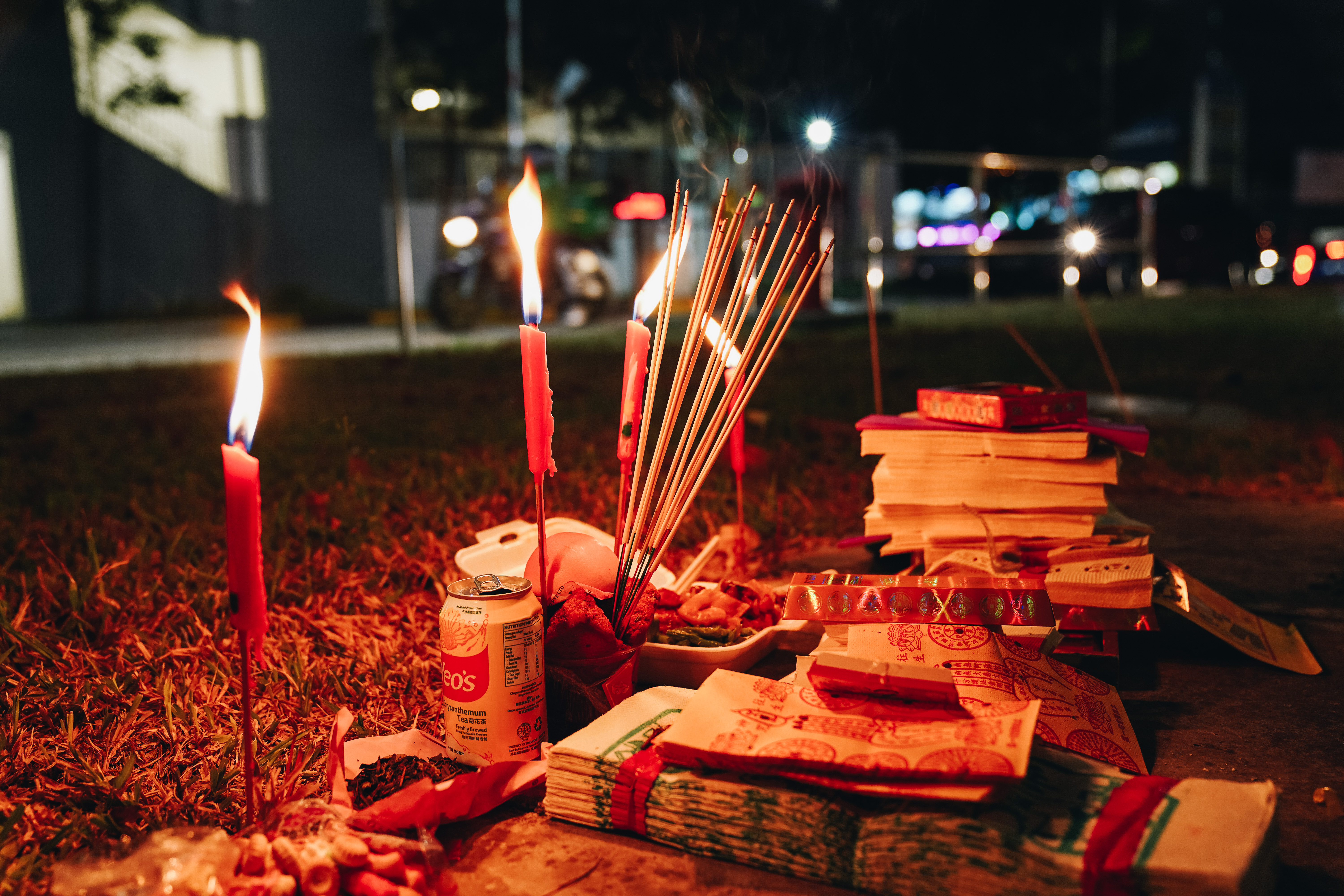 Chia's offerings. Photo by Rachel Ng.
Chia's offerings. Photo by Rachel Ng.
"It's a religious practice. I guess on this part, we have no choice but to follow (the practice). We can also try to recycle, which is what we have been doing," says Chia.
Her husband chimes in: "These are traditions, so we are just following ah, what was being brought down (by our elders)."
Wong also mentions that a more environmentally-friendly way of burning incense would be acceptable to him: "But if they (the government) have a better way for us to do it, I'll be fine (with doing it). But now there's no proper way, we have to do it like that lor."
There are some Buddhists who disagree with the practice of burning, though.
In the meantime, it's probably best if you keep in mind the do's and don'ts of the Hungry Ghost Festival, lest you end up pissing certain ~spiritual beings~ off:
Top photos by Rachel Ng.
If you like what you read, follow us on Facebook, Instagram, Twitter and Telegram to get the latest updates.
